An artwork on a wooden panel has a unique combination of the risks found in traditional paintings and wooden antiques. This means that both materials must be thoroughly considered during presentation, care, assessment, and any required restoration treatments. Knowledge of protecting paintings on panel will reduce the possibility of drastic deterioration, which can result from an improper environment or unawareness of potential dangers. This article will guide you through the requirements an artwork on panel may face, as well as the context of these often historically important pieces of fine art.
 Above: an artwork on panel which is about to undergo conservation treatment with a tailored solution
Above: an artwork on panel which is about to undergo conservation treatment with a tailored solution
Creating an artwork on panel
The construction of a panel for this type of artwork was a difficult and time-consuming task. A common practice can be dated back to 1390 and changed very little over the following centuries. Firstly, a carpenter would cut a piece from often a willow, poplar, or linden tree, using a technique known as a radial cut (going against the grain of the timber). Although some pieces use just one piece of wood, others may have several different parts joined together to create the appropriate size.
 Above: Salvator Mundi by Albrecht Dürer (1505) created in oil on linden, from left to right: the full unfinished painting, an infrared reflectogram of the painting, and an X-ray of the painting which shows the wooden panel joins
Above: Salvator Mundi by Albrecht Dürer (1505) created in oil on linden, from left to right: the full unfinished painting, an infrared reflectogram of the painting, and an X-ray of the painting which shows the wooden panel joins
This was then levelled and sanded down for a smooth base, before being covered with resin and linen either by a specialist merchant or within the artist’s studio. A final step would apply layer upon layer of a chalky mixture known as gesso. Each layer is applied and then sanded down when dry. This is completed over a few days or weeks, with the base building up to a texture, not unlike ivory. Some artworks have as many as 15 layers of gesso beneath their surface.
 Above: a 5th century painted wooden panel from Egypt featuring a bird
Above: a 5th century painted wooden panel from Egypt featuring a bird
The painted layer on a historic panel is often tempura (an egg yolk medium) or encaustic (hot wax). From the 15th century onwards oil painting became the most common medium.
Our conservators have specialist knowledge of these materials and panel construction. This helps them to fully restore all parts, including those which you may not see upon casual viewing. Our team aims to stabilise and preserve the original wood, as well as the painting medium, gesso layers, and the overall craftsmanship which has gone into the creation of such a piece.
 Above: a detail from a 14th century panel painting featuring two saints in tempera and gold leaf
Above: a detail from a 14th century panel painting featuring two saints in tempera and gold leaf
The history and value of panel artworks
Panel artwork dates back to classical civilisation, but very few ancient pieces survive today due to their materials. A notable example of ancient panel art is found on the Fayum mummy portraits, which date between the 1st and 3rd centuries. Dozens of these mummy portraits exist thanks to a consistently hot and dry Egyptian climate, with bright colours surviving from tempera or wax base. In 2018 a mummy panel from this period sold at Sotheby’s for £162,500, surpassing its estimate of £60,000 – £90,000.
 Above: a greco-roman boy featured on a Fayum mummy portrait created from encaustic on wooden panel
Above: a greco-roman boy featured on a Fayum mummy portrait created from encaustic on wooden panel
In the 12th-century panel art became a prominent feature in Christian worship, a change in practice meant that the priest would now stand on the side of the congregation during services, leaving space behind the altar open for an impressive work of art. An altar backing known as a ‘dossal’ was a common panel piece, as this was cheaper than a vessel containing precious metals, jewels and valuable materials, especially in regions that may have been in poverty. The 13th to 15th centuries were extremely popular for altarpiece artwork, including the world-famous Ghent Altarpiece, a polyptych by Hubert and Jan van Eyck which resides in St. Bavo’s Cathedral, Belgium. These forms of religious art, as well as smaller panel pieces, often sell in the hundreds of thousands depending on their detail, themes and provenance.
 Above: a detail from a 15th century Christian oil on panel by the master of the Munich Bavarian panels
Above: a detail from a 15th century Christian oil on panel by the master of the Munich Bavarian panels
Canvas became dominant during the renaissance period, however, panel paintings remained a central medium in many countries and practices. Peter Paul Rubens famously preferred the panel as a more robust base for this artwork, creating complicated surfaces out of as many as 17 pieces of wood. Although panel pieces became less common from the 18th century, many famous artists have examples of this medium in their work, including Francisco Goya, The Pre-Raphaelite Brotherhood, and Francis Bacon. In 2013 a Dante Gabriel Rossetti piece on panel sold for £4,562,500.
 Above: a detail from a 17th century panel by David Teniers the Younger
Above: a detail from a 17th century panel by David Teniers the Younger
Risks and the restoration of panels
Atmosphere
Like all artwork, panel paintings can be significantly affected by the atmosphere they reside in. Similarly to wooden furniture or features of a home, the wooden panels will slowly move depending on the levels of humidity in the air, expanding as humidity increases and shrinking as it decreases. This will begin to affect the artwork, which may crack, split, warp and distort over time. The thin lines of natural cracking or ‘craquelure’ may begin to increase in depth and paint may become unstable, resulting in a flaking surface.
 Above: a Netherlandish oil on panel by Jean Hey from 1490, this shows aged surface cracks due to movement in the wood and paint over time
Above: a Netherlandish oil on panel by Jean Hey from 1490, this shows aged surface cracks due to movement in the wood and paint over time
Natural movement
A small amount of expansion and contraction in panels cannot be avoided, as this is a natural part of the material. Panels warp slightly over time due to the back of the artwork being wood that is purely exposed, whilst the painting side is protected. Trying to completely stop this from occurring could lead to further damage as the panel moves against any constraints. The measures which should be taken to avoid this risk are simply to keep the artwork in a steady and even environment, with little fluctuation in temperature and humidity. A recommended humidity level for panel artworks is 50% with temperatures of around 20 degrees celsius.
Cradles and constrained panels
On some panel paintings, a ‘cradle’ has been fitted to the piece to prevent movement or warping. A cradle can be identified as a grid of wooden slats on the back of an artwork, put in place to strengthen the piece and prevent warping. Cradles lead to a common issue of the panel deteriorating as the wood fights against the tight constraints, leading to splits and severe damage. Our conservators will carefully remove this element to prevent further problems and restore the piece with stabilisation methods that allow for the natural movement of the wood.
 Above: a close up of a modern cradle on the back of a 16th century panel painting by Gerard David
Above: a close up of a modern cradle on the back of a 16th century panel painting by Gerard David
Surface contamination
Panel paintings may have also been exposed to contamination over their lifetime. This includes nicotine, fireplace smoke, and airborne dust and debris. This should be cleaned by a professional to expertly remove any toxic elements and bring back clarity to the artwork. The panel may also have encountered flooding or leaks, as well as fires, leading to a brittle structure in need of restoration work to reduce the risk of complete deterioration.
Woodworm
Pests may affect wooden items, with panel artworks being no exception. Small holes may begin to appear and these may grow in number or size. They may also be evident from a prior infestation. In any case, these holes should be blocked by a conservator to avoid encouraging the pests to return. Our conservation team can also use an Ozone machine to eliminate any active infestation in a painting.
 Above: an example of woodworm holes found in an antique piece, these need to be sealed to prevent them returning
Above: an example of woodworm holes found in an antique piece, these need to be sealed to prevent them returning
Splitting wood
Panels that have split or present three-dimensional areas of damage can be evened out and have their surface restored to reduce visual disturbances. This consists of a filling of the affected area with specialist materials, followed by expert retouching of the original colours where required. Our conservators will always aim for minimal artistic intervention.
Unstable paint
Flaking and blistering paint can be stabilised with conservation approved adhesives, ensuring that the risk of any areas falling away is vastly reduced. Discoloured or yellowing artwork can be cleaned of any contamination, as well as old varnish which may be perishing. A new layer of UV-protective, non-yellowing varnish will be applied, adding to the conservation of the piece.
 Above: our conservator applies small amounts of a solution to consolidate the paint layer with conservation appropriate methods
Above: our conservator applies small amounts of a solution to consolidate the paint layer with conservation appropriate methods
Warping
A curved or warped panel will not be corrected by our conservators, as this may cause more harm. Instead, the piece can be stabilised and properly fitted into a frame to reduce any visual disturbance and limit the fluctuation of humidity on the back of the artwork. Previous restorations of this kind may want to be altered, as the addition of metal bars or any constraints on the wood to avoid warping may cause drastic damage as the wood tries to break free. Our conservators will always approach wooden objects and artworks with knowledge of their natural variation or movement, which should always be taken into account for sustainable preservation.
Mould and rot
A panel that has been in high levels of moisture or involved in a leak may be suffering from mould and rot, which requires professional intervention to prevent further decay. If the panel has recently been in contact with water, avoid the use of industrial drying units and contact our team as soon as possible for a fast response to minimise damage.
 Above: a layer of mould forming on the back of a painting which requires specialist removal and treatment to prevent further damage
Above: a layer of mould forming on the back of a painting which requires specialist removal and treatment to prevent further damage
Get in touch
If you have any questions or concerns about oil painting restoration and protecting paintings on panel in your care, please contact our team today via [email protected] or 0207 112 7576

 Above: an artwork on panel which is about to undergo conservation treatment with a tailored solution
Above: an artwork on panel which is about to undergo conservation treatment with a tailored solution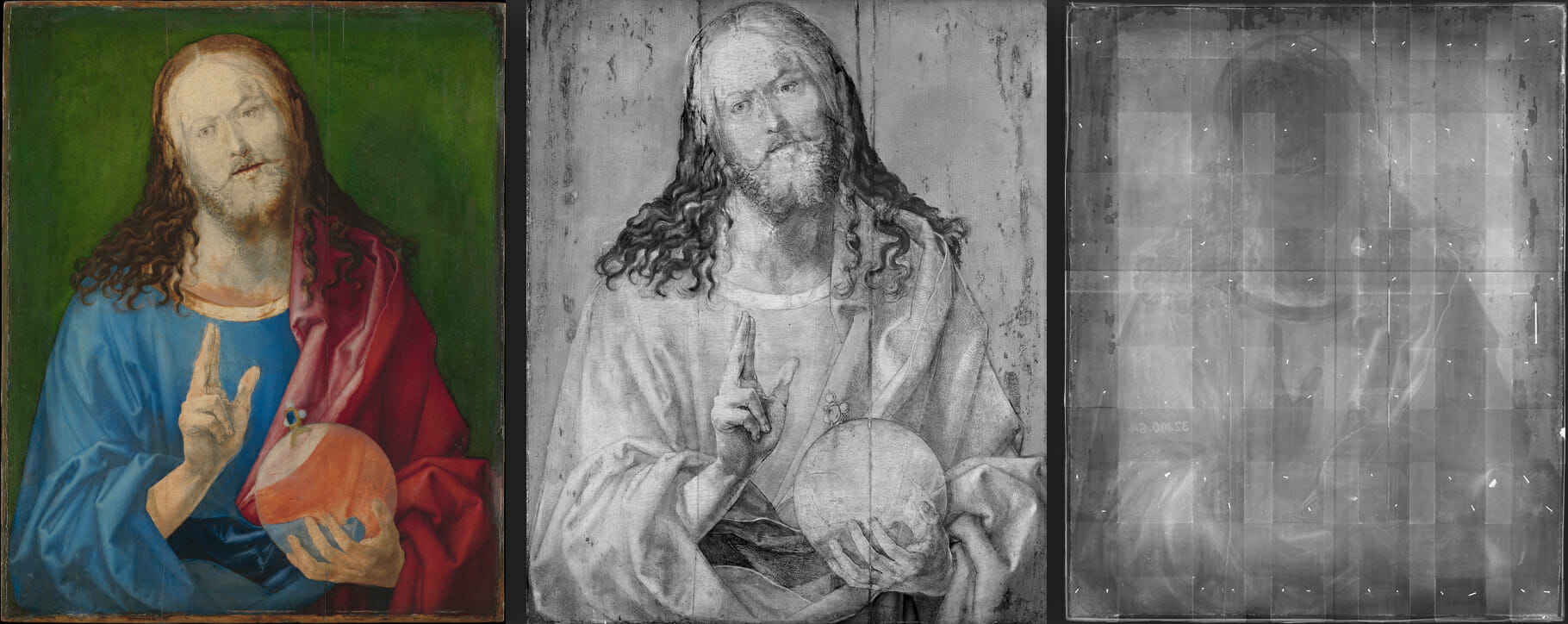 Above: Salvator Mundi by Albrecht Dürer (1505) created in oil on linden, from left to right: the full unfinished painting, an infrared reflectogram of the painting, and an X-ray of the painting which shows the wooden panel joins
Above: Salvator Mundi by Albrecht Dürer (1505) created in oil on linden, from left to right: the full unfinished painting, an infrared reflectogram of the painting, and an X-ray of the painting which shows the wooden panel joins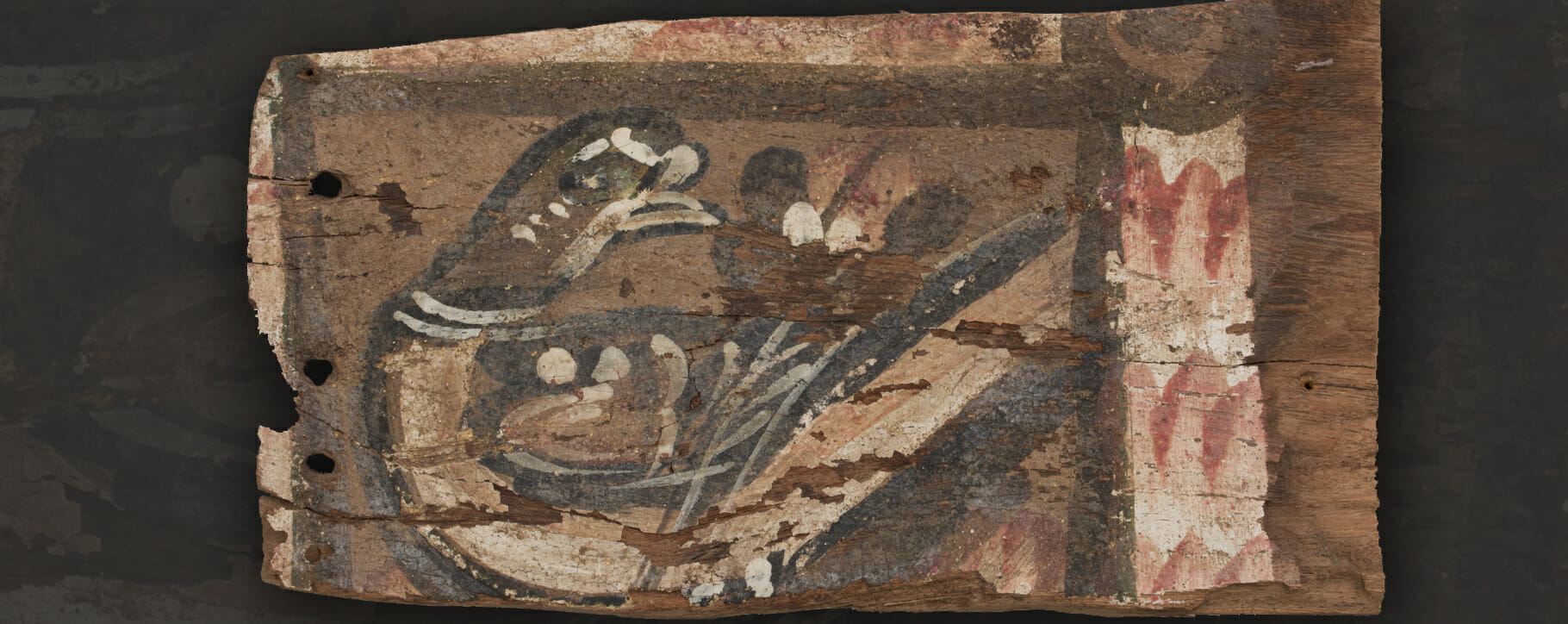 Above: a 5th century painted wooden panel from Egypt featuring a bird
Above: a 5th century painted wooden panel from Egypt featuring a bird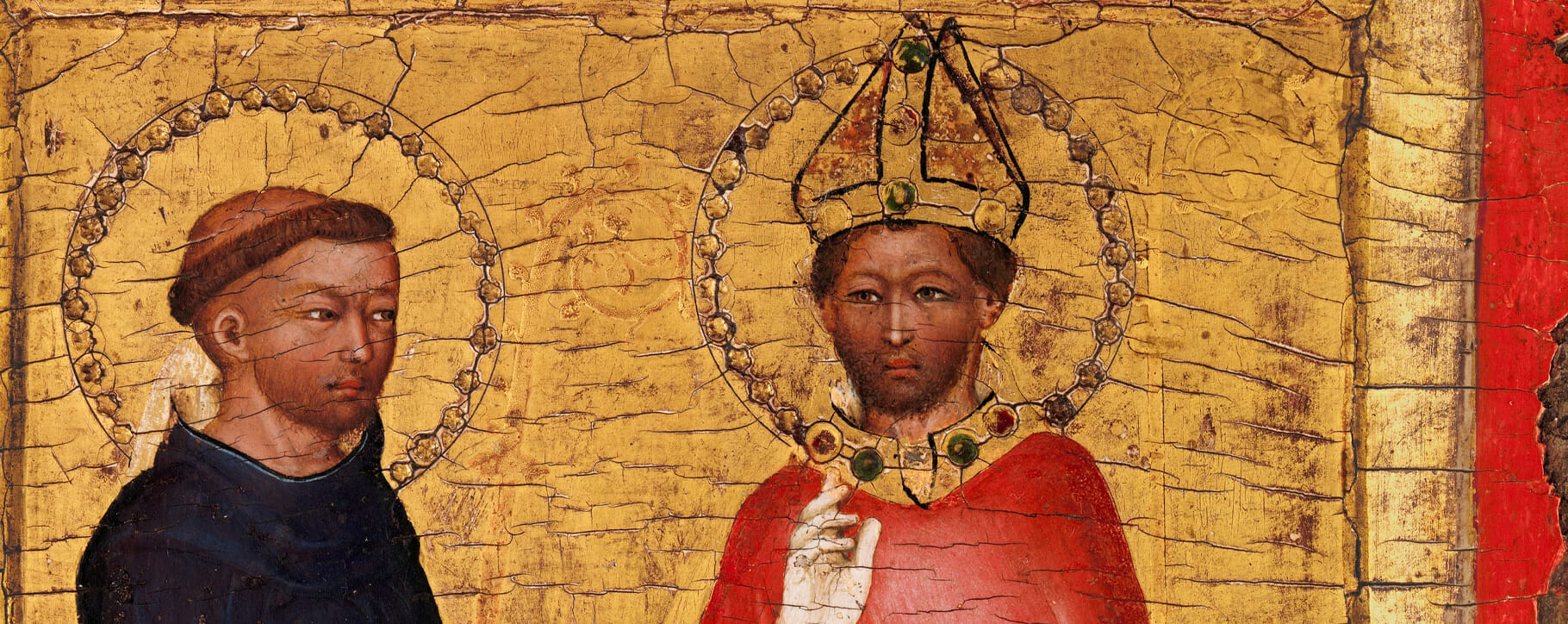 Above: a detail from a 14th century panel painting featuring two saints in tempera and gold leaf
Above: a detail from a 14th century panel painting featuring two saints in tempera and gold leaf Above: a greco-roman boy featured on a Fayum mummy portrait created from encaustic on wooden panel
Above: a greco-roman boy featured on a Fayum mummy portrait created from encaustic on wooden panel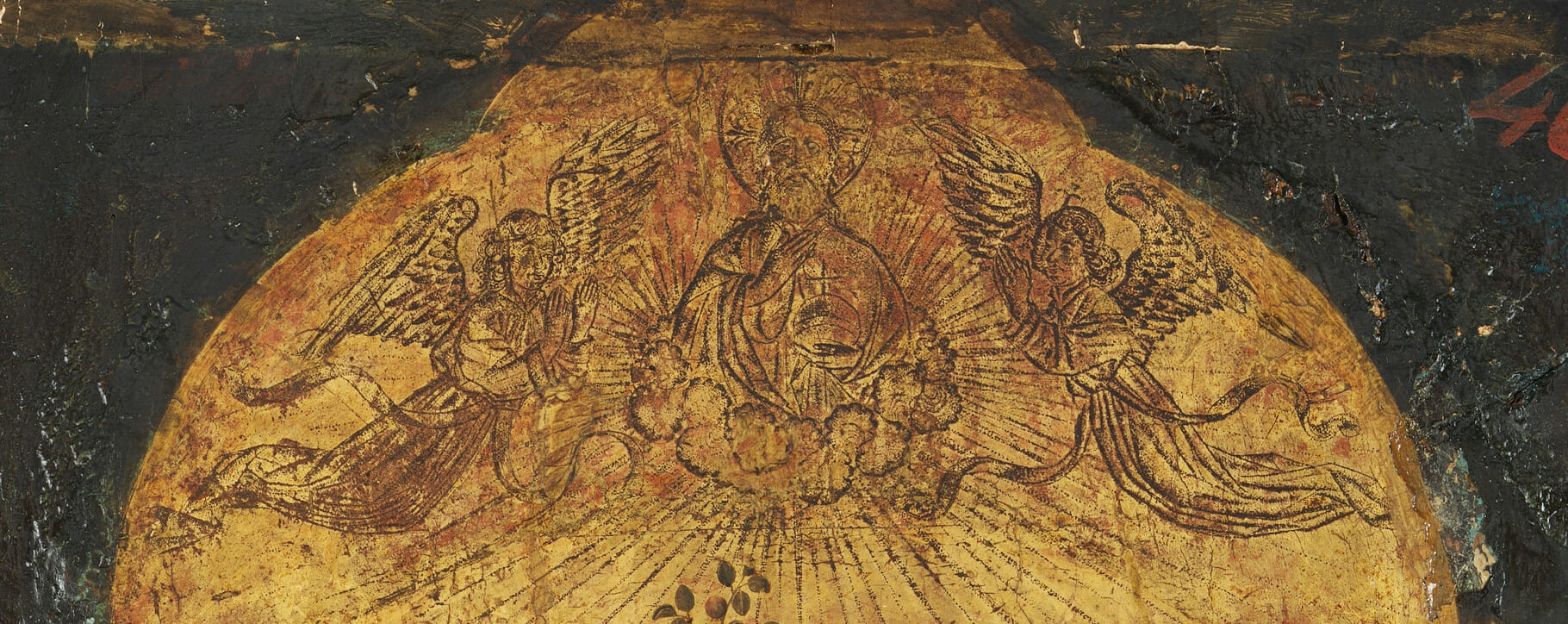 Above: a detail from a 15th century Christian oil on panel by the master of the Munich Bavarian panels
Above: a detail from a 15th century Christian oil on panel by the master of the Munich Bavarian panels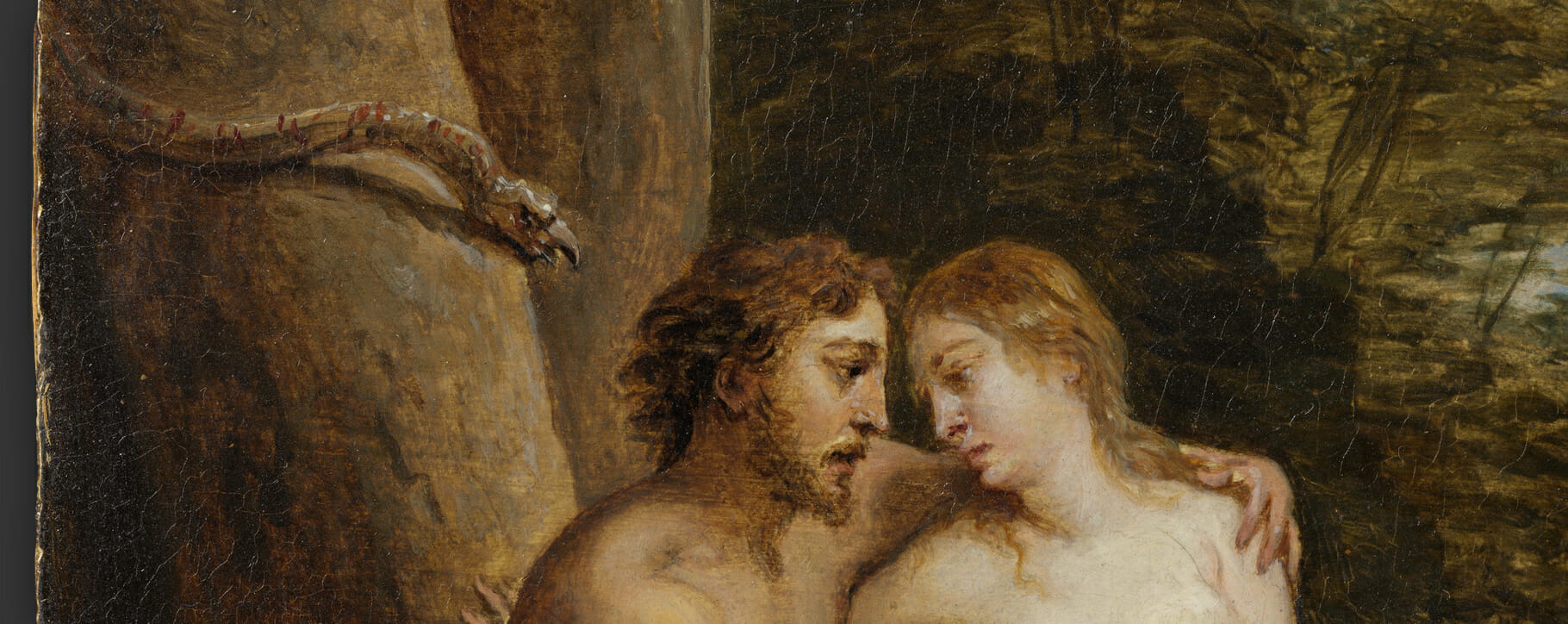 Above: a detail from a 17th century panel by David Teniers the Younger
Above: a detail from a 17th century panel by David Teniers the Younger 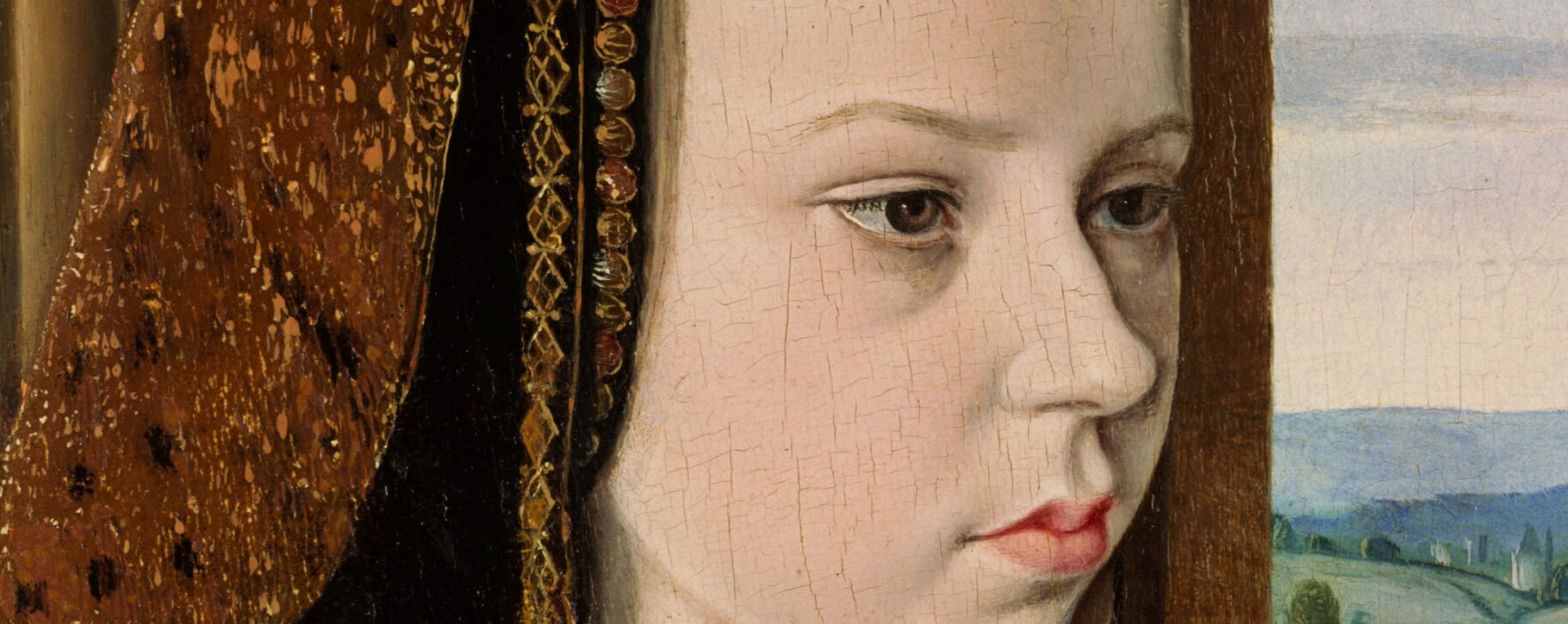 Above: a Netherlandish oil on panel by Jean Hey from 1490, this shows aged surface cracks due to movement in the wood and paint over time
Above: a Netherlandish oil on panel by Jean Hey from 1490, this shows aged surface cracks due to movement in the wood and paint over time Above: a close up of a modern cradle on the back of a 16th century panel painting by Gerard David
Above: a close up of a modern cradle on the back of a 16th century panel painting by Gerard David  Above: an example of woodworm holes found in an antique piece, these need to be sealed to prevent them returning
Above: an example of woodworm holes found in an antique piece, these need to be sealed to prevent them returning Above: our conservator applies small amounts of a solution to consolidate the paint layer with conservation appropriate methods
Above: our conservator applies small amounts of a solution to consolidate the paint layer with conservation appropriate methods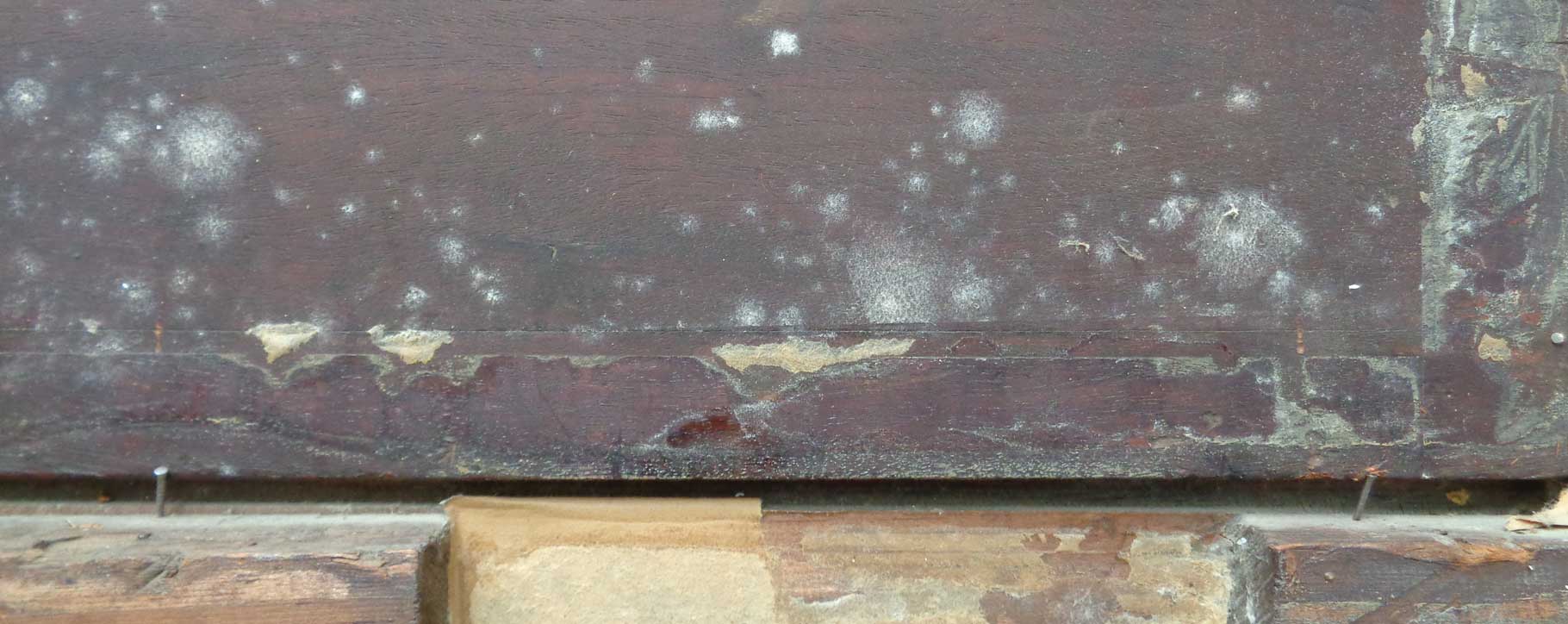 Above: a layer of mould forming on the back of a painting which requires specialist removal and treatment to prevent further damage
Above: a layer of mould forming on the back of a painting which requires specialist removal and treatment to prevent further damage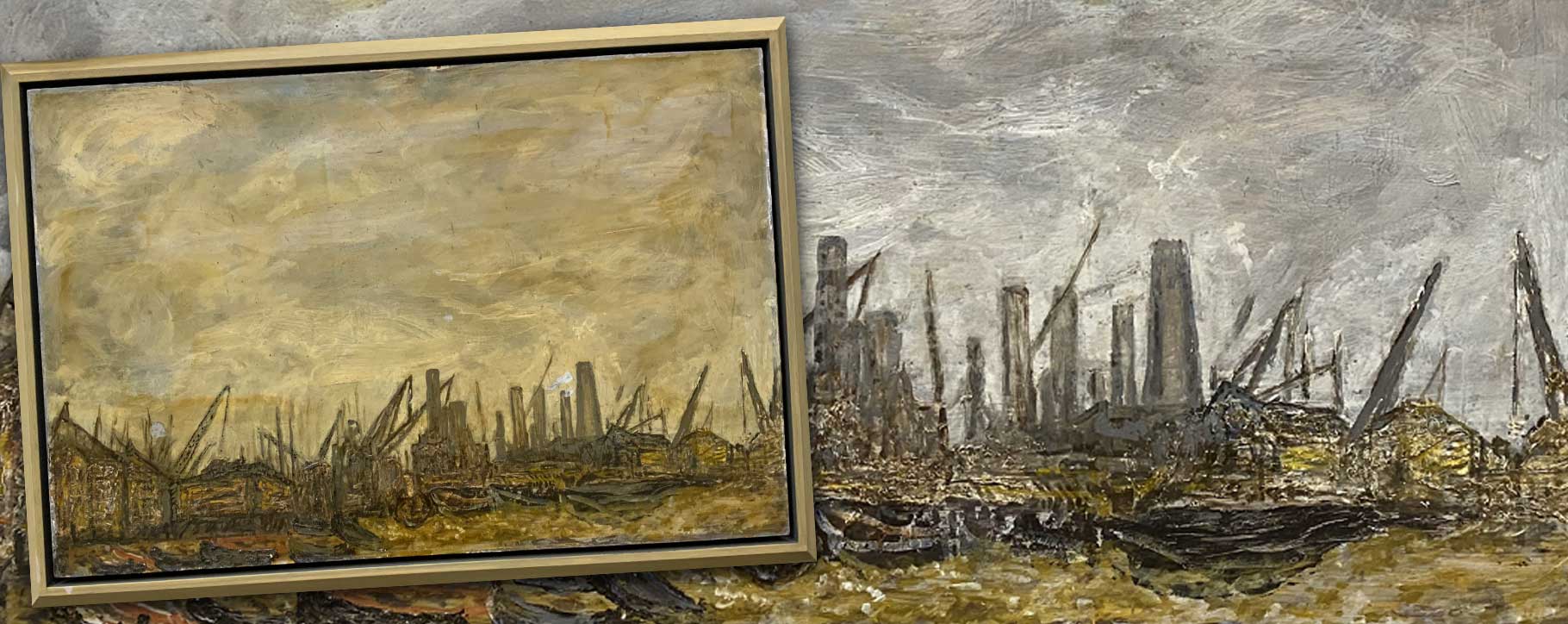 Above: an oil on panel before and after restoration by our conservator who removed and replaced a heavily discoloured varnish layer
Above: an oil on panel before and after restoration by our conservator who removed and replaced a heavily discoloured varnish layer




